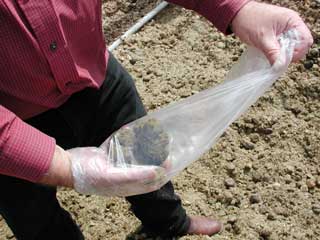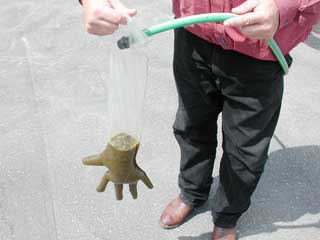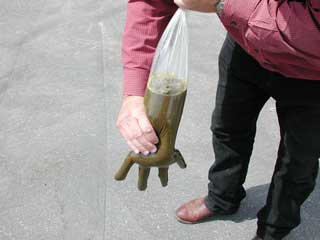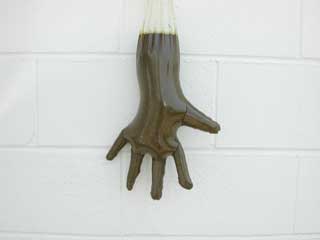Introduction: A common problem found in horses that reside in sandy
environments or are fed on the ground can be sand colic. As the horse grazes or
feeds, small amounts of sand can be ingested. Excessive amounts of sand in the
digestive tract can lead to intestinal irritation, impactions, and colic. The
following pictures and captions outline a simple procedure that can be used to
determine if a horse is consuming large amounts of sand.
Note: If it is determined that a horse is consuming sand, two important
things should be done. The first is that psyllium should be added to the horse’s
diet. The psyllium can come in many different forms and from many different
products. The recommended amount of psyllium is usually about 0.5 kg or 1 pound
of psyllium 2-3 times a day. The second thing that can help prevent sand
problems is to never feed a horse directly on the ground. Place all feeds in
haybags, feeders, or buckets.
 |
|
|
| In this example, a clean
palpation sleeve has been placed over one hand. A fresh manure sample
should then be collected, being careful not to pick up any sand or
dirt in the sample. A large handful of manure is all that is required
to perform the test. |
|




